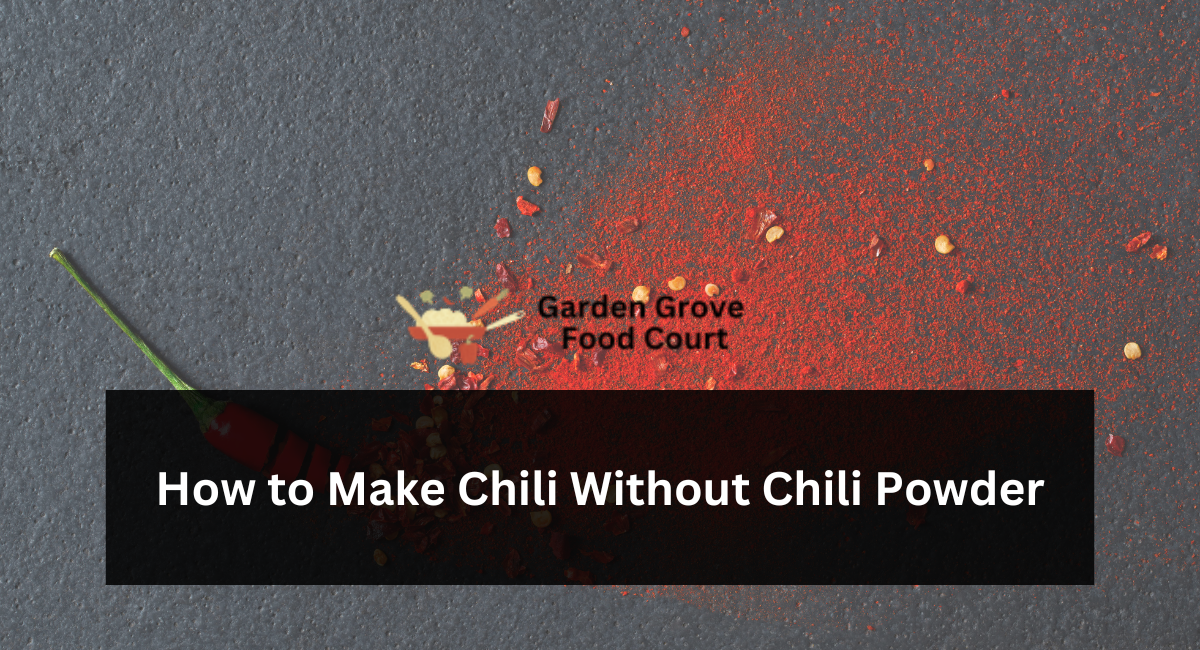Chili powder is a mixture of spices that is commonly used in southwestern cuisine. You’ve likely encountered chili powder in dishes such as chili, tortilla soup, taco meat, and even baked beans. Chili powder varies among different brands, as it might consist solely of chilies or a mixture of spices resembling taco seasoning, which may include ingredients like onion powder, cumin, and others.
The majority of chili powder consists of a mixture of mild to medium chilies, mainly paprika, although it can also contain chilies de Arbol, pasillas, chipotle, and cayenne.
How does chili powder taste?
The taste of chili powder varies depending on the brand. Various manufacturers offer diverse combinations; some have a spicy flavor, while others have a smoky or sweet taste. One common factor across all of them is dried peppers. Typically, chili powder has a significant amount of paprika, so if you enjoy its taste, you will likely appreciate chili powder.
What is chili powder, and is it possible to make it yourself?
If you enjoy chilies, try sampling various brands of chili powder. Since chili powder is derived from different types of peppers, it may occasionally have a somewhat bitter taste. Therefore, it is advisable to sample a small amount of the new container of chili powder separately in order to familiarize yourself with the flavors it will contribute to your cooking.
Chili powder is occasionally produced as the sole seasoning required for preparing chili soup. Thus, it may contain cumin, coriander, onion powder, garlic powder, oregano, cinnamon, and other ingredients. Before making a purchase, it’s a good idea to check the contents list to determine the specific sort of chili powder included.
How to Create Your Chili Powder
Similar to many spice blends, making it at home is the optimal choice. By doing this, you can personalize your flavors to your exact preferences. Use this simple method to create chili powder that is ideal for chili soup, enchiladas, tortilla soup, taco meat, and other dishes:
Mix up three parts of sweet paprika with equal parts of cumin, garlic powder, onion powder, and oregano. Lastly, add a small amount of cayenne. Do you enjoy the smoky flavor? Include chipotle powder or smoked paprika. Enjoy spicy food? Include additional cayenne. Additional ground chiles such as Aleppo, chile de Arbol, Urfa Biber, crushed red pepper, and guajillo might also be excellent choices if you desire more spiciness and flavor in your mixture.
What distinguishes Cayenne Pepper from Chili Powder?
Top Alternatives for Chili Powder Seasoning for Tacos
Like chili powder, taco seasoning includes many spices and might differ greatly across different brands. If your recipe requires chili powder, taco seasoning can be a suitable substitute for some Mexican-American foods, such as ground beef for burritos or nachos. Taco seasoning may not be ideal for chili soup or other foods that do not tend towards the traditional American “taco” characteristics.
To make this change, take a look at your recipe and the contents of your taco seasoning, and exclude any spices from the recipe that are already included in your taco seasoning packet. Moreover, numerous taco spices contain salt. Therefore, it is advisable to use less additional salt to compensate for this.
Paprika Sweet Hungarian paprika is typically the primary component in chili powder, so if that’s all you have available, it functions adequately; substitute it in equal quantities for chili powder. If you have a chance to possess various kinds of paprika, such as fiery Spanish or smoked paprika, combining them with the sweet version can result in a more complex flavor. It varies according to your preferences and how much spiciness you prefer. However, if a recipe requires two teaspoons of chili powder, you can experiment with using one teaspoon of sweet paprika and half a teaspoon of each of the spicy and smoked alternatives.
Chile powders
Chile powder with an “e” refers to a powdered form of a particular type of chili, such as guajillo, pasilla, or cayenne, which is commonly used in chili powder. For recipes where you like the taste of pepper to be prominent and you are comfortable with a bit of spiciness, such as stewed Mexican-style beans, opt for chile powder.
The flavor will vary depending on what ingredients you have available. These powders are typically hotter than chili powder, so use half a teaspoon of chile powder for every teaspoon of chili powder a recipe requires.
Conclusion:
Embrace the bold flavors of chili without traditional chili powder. Our inventive recipe proves that a lack of this staple spice doesn’t mean compromising on taste. Explore alternative seasonings and create a chili that’s both unique and satisfying.

